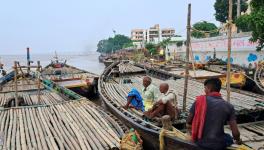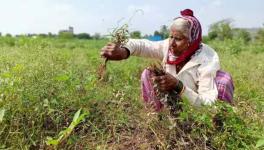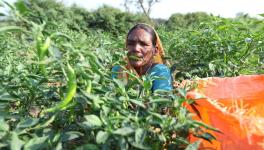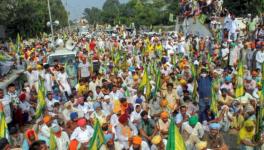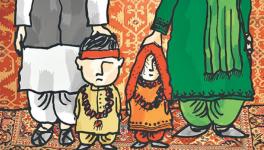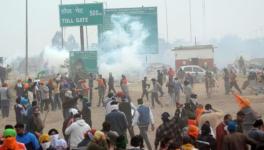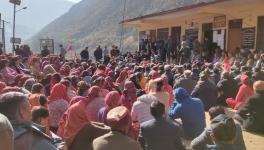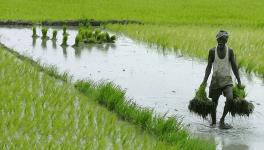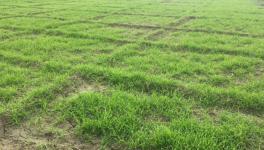The Hidden Hunger in Morocco
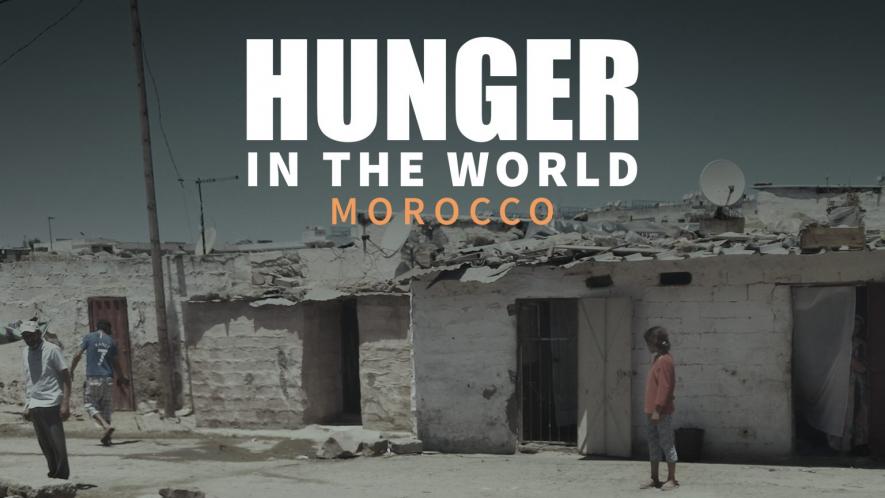
An Informal housing settlement in Karyan Touma, Ain Sebaa, Casablanca. It is very hot during the summer and floods in the winter. Photo: Madaar
Hunger has a strong presence in the Moroccan imaginary as much as it exists in reality. Throughout the course of history, the people of Morocco have suffered from cyclical droughts, marginalization and exclusion, and the systemic theft of their wealth and harvests by the Mahkzen, the political regime led by the monarchy.
The agricultural sector in the country employs 40% of the labor force and contributes to 15% of the GDP, therefore making the country’s economy and the economic situation of its people very vulnerable to shifts in the global market and climate change.
In addition to the challenges presented by the COVID-19 pandemic, the country suffered from severe drought in 2019 and 2020. The capacity of the dams which supply the country’s vast irrigation system in the South and East of the country dropped to 37% nationally by October 2020 while the deficit of surface water reached a record high of 94%, according to Abdelhamid Aslikh, the head of the Agadir region’s water reserves agency. This greatly impacted grain production in the country. Cereal production in 2020 was 39% lower than in 2019, while wheat imports increased by 46.3%.
The most recent drought had a strong impact on the rural and agricultural sectors who have been suffering for decades with increased droughts and the inequality enshrined by the rule of the Mahkzen. This impact is most clear in the widespread hunger in Morocco.
According to the United Nations Hunger Map and the Global Hunger Index, hunger is not a major concern in the country. The Global Hunger Index rated Morocco 44 out of 107 countries assessed, with a ‘low’ hunger rating and the UN similarly assessed that a small percentage of the population suffers from malnutrition. Activists in Morocco who see the reality on the ground, have little faith in these official numbers. They attribute what they call a substantial underestimation to the government’s lack of will to accurately report on the situation, made possible due to the control of the monarchical system. Additionally, activists remark that the immense social stigma attached to ‘hunger’ in the country means that many people will not admit to their situation.
The numbers are especially hard to believe given that the national rate of multidimensional poverty among children is 39.7% and in rural areas, this number is as high as 68.7%. Multidimensional poverty considers factors such as access to education, healthcare, water, hygiene, housing, and food and nutrition.
Hunger in the breadbasket
Mohammed, a young child in the village of Ouled al-Saghir in the province of Settat, a few hours away from Casablanca, is one human face of this multidimensional poverty. The boy who runs around the fields, chasing a dog and a flock of sheep is about to turn seven. However, his appearance suggests he is three or four years old.
Mohammed did not go to school despite all the education programs of the state. His struggling father, who works the whole day herding sheep and cows for a wealthy family, never had the chance to think about his son’s education. He has been toiling for years without a proper salary. He only could manage some basic accommodation for his family as the promise of 150 USD per month in remuneration never was fulfilled.
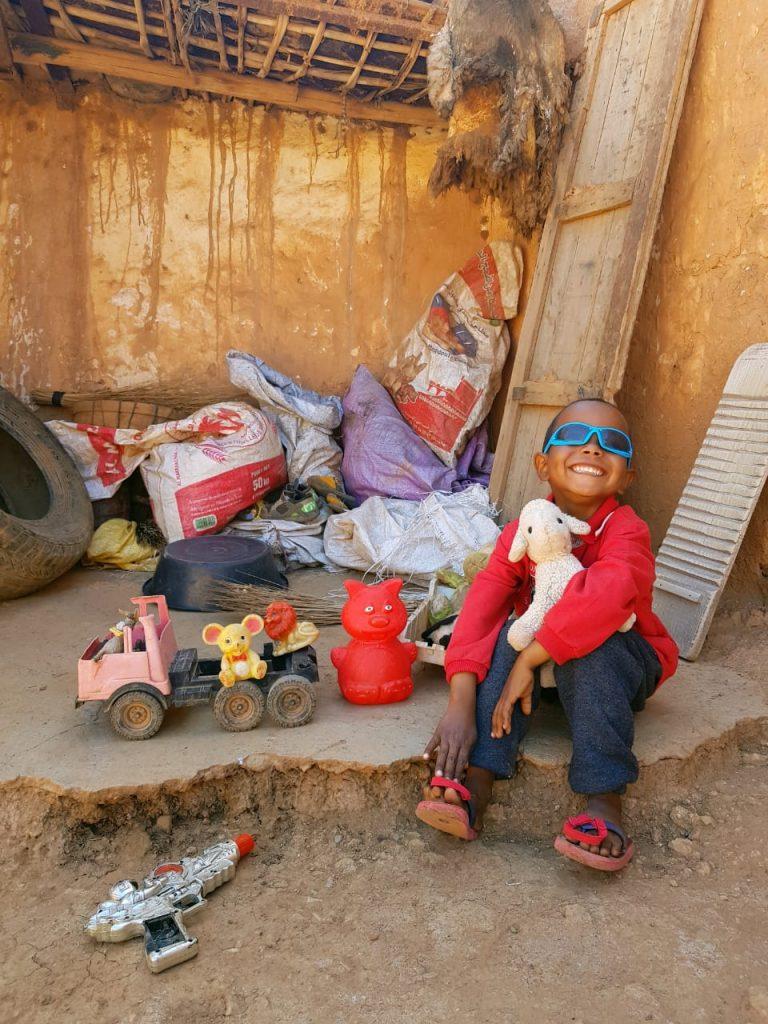
Despite the harshness of life, Muhammad finds time to play, Ouled al-Saghir in the province of Settat, Photo: Madaar
Mohammed accompanies his father when grazing sheep and his mother as she milks the cows, and helps with work. He does not have time to play with other children and has instead made friends out of some broken dolls that he found abandoned in the backyard of the house.
Mohammed’s food is limited to two meals a day, with bread and tea being the primary ingredients. Bread has tremendous symbolism in Moroccan popular culture and constitutes an essential element in most popular dishes. In fact, Moroccans refer to their work or employment as “the tip of the bread” or just “the bread”. Others express pride at the fact that they grew up on “bread and tea”. Bread is considered so sacred that leftovers are not mixed or thrown away with other remnants of a meal. In Morocco, some people kiss bread if it falls on the ground and consider it one of the most important blessings of God.
However, this reverence for bread hides a long history of malnutrition, and the inherent fear of millions of marginalized people of hunger or the loss of their livelihoods.
Mohammed’s mother said that his body had not grown for the past three years and that it is possible that he suffers from a disease. She has been advised to take him to a priest although she is hesitant, hoping that her son may perhaps be cured by divine will.
Mohammed may indeed suffer from malnutrition or one of the diseases prevalent in these areas, but the residents know very little about the nearest hospital except that it is very far away. The farthest they go to is the weekly market, a few kilometers away.
But it is not just children like Mohammed who bear the brunt of multidimensional poverty. Women also suffer the brunt of rural life and crushing marginalization which drives many to migrate to the cities to seek any available work under any circumstances in order to guarantee a better life for their children. This choice is met with skepticism from the older generations but many young women no longer care about this conservative attitude.
Nevertheless, Mohammed’s mother does not dare to travel to the city because she has heard horror stories of the suffering of the poor in factories and shanty houses. She is determined that her son should not fall prey to child domestic labor or become a victim of human trafficking. She would rather live in the semi-arid region affected by drought and a lack of proper rural development programs rather than become one of the residents of the poor neighborhoods crushed under the wheel of the “Economic Emergence Plan” in the city.
Hunger follows people to the urban peripheries
No city symbolizes Morocco’s economic ‘glory’ as does Casablanca. It is the main economic center, its industrial hub, and the kingdom’s gateway to the world. With its large port and airport, it contributes to a third of the country’s national GDP. Yet, enormous social inequalities plague its population of 3.7 million with many people still groaning under the weight of hunger, which has deepened with the COVID-19 pandemic.
The city center itself is a picture of prosperity and development with its high-rise condos, corporate headquarters, hotels and outlets of global brands. At every corner, people wait for various modes of transportation and there is no dearth of private vehicles. This is the ‘useful center’ of Morocco as opposed to the regions the former French colonial authorities branded the ‘useless Morocco’. Anyone wandering around in this part of the city would not believe that they are in a ‘third world’ country on the ‘track of development’.
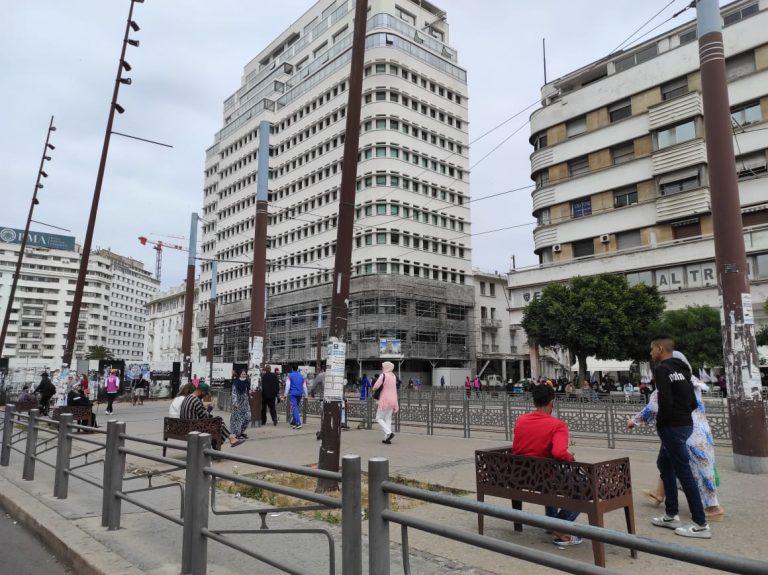
Hassan I Street, Casablanca. Photo: Madaar
However, beyond these wealthy streets and their denizens, a drastically different picture emerges – one that is completely at odds with the propaganda of the regime and its co-opted media.
Among the invisible section of the city’s workers are the ‘Mikhala’, who make their living from collecting garbage and leftovers such as food scraps, empty beer bottles, or broken appliances. Their nights are spent running after garbage trucks to collect anything that they can sell to recycling factories.
The Mikhala are often confined to the slums and marginal areas. They congregate at the end of the day in cemeteries and deserted places for a drink or anything which can make them warm. They spend the rest of the night drinking whatever they can purchase with their limited means.
A public health worker told Madaar that the emergency services at the hospital usually receive many such people with critical health conditions every day. Many of them fall sick after eating rotten food or consuming toxic alcohol. Sometimes pregnant women come for the purpose of delivery and end up abandoning the infant or trying to get rid of it. Many of them suffer from HIV, syphilis, and hepatitis or contagious diseases.
Most Mikhala live in “Al-Karyanat”, which are squatter neighborhoods or shantytowns, mainly built by poor peasants who came from different regions of the country only to be exploited in industrial complexes, ports, and various services which are part of what the official media calls the “Economic Emergence Plan”.
The industrial programs in the city need cheap and unskilled laborers. They have neither employment contracts nor basic rights. The workers toil for long hours on unsustainable wages, and they are usually forced to build tiny shacks to accommodate their families. Usually, these shacks don’t meet the minimum elementary standards of habitation and lack water, electricity, and sewage drains.
With the transformation of Casablanca into the largest economic city in Morocco, the number of such workers rose to hundreds of thousands and slums turned into shantytowns which the authorities have surrounded with fences to conceal the scale of the tragedy.
At the same time, the real estate mafia has its eyes on the land on which these shanty towns are located. Attempts are afoot to pass bills and rulings that will expel these residents. Those who are lucky might get minimal compensation. Many others will not. In place of the shantytowns will rise malls, hotels, and luxury real estate projects.
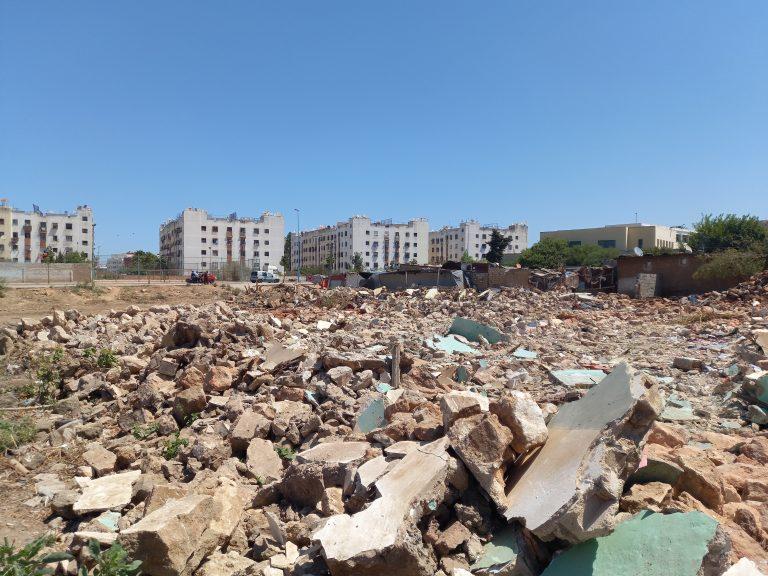
A large part of the neighborhood was demolished by the local authorities, while others refused to abandon their homes, Karyan Touma, Ain Sebaa, Casablanca. Photo: Madaar
It is noteworthy that the 14 young men who perpetrated the terrorist attacks on May 16th, 2003 in Casablanca came from the heart of these slums, from the aforementioned strips of misery. The Karyan or neighborhood they came from is called “Karyan Touma”. They were raised in misery and nurtured with fundamentalist ideas long before they decided to target two touristic restaurants and other areas with explosives. The smell of hunger spread from this terrorist act beside longstanding marginalization.
Poverty and hunger in the slums
In one of the shanty houses in the ‘White City’ of Casablanca, we set up an appointment with activists of the Moroccan Association for Human Rights, and moved to a douar, an unstructured residential community, in Ain Sebaa in the northern part of Casablanca.
The purpose is to examine the condition of some people after the authorities demolished several shacks in Karyan Touma. Several families in the neighborhood had refused to allow their homes to be demolished, due to their lack of confidence in the promises made by the local authorities that they would get ‘decent’ homes within the Social Housing Program, and they insisted on obtaining official documents to prove it.
As soon as we reached Karyan Touma, we ran into vast areas full of the rubble of houses that had been demolished. Dotting the landscape were the shacks of dozens of families who had objected to the demolition. Around the douar, gray concrete towers loom. “It’s like Gaza,” says one of the residents who greeted us, mocking the scene.
Wastewater flows openly through the area, its acrid smell impossible to ignore. Nearby is a huge garbage container.
On the sidelines, but not outside the compound, the carcass of a dead donkey lies in a large pit near the residents’ homes. “The area is infested with rats which enter our homes all the time,” says a young man who greets us.
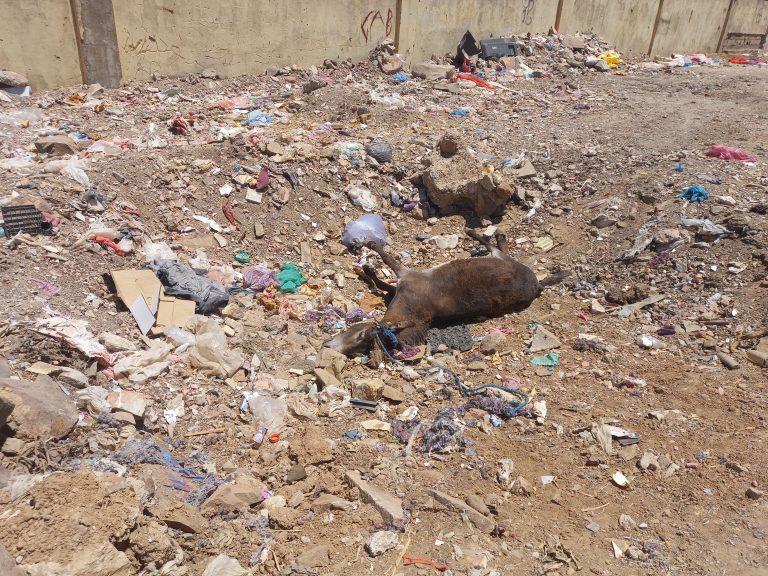
A dead donkey, in the middle of a large hole, near the houses of the residents, reflecting the absence of the most basic public services, Karyan Touma, Ain Sebaa, Casablanca. Photo: Madaar.
We spoke to Abdul Ali, who lives in the same neighborhood and works as a security guard. He is married and has a daughter. One of his brothers also works as a security guard and has six children while another brother has four children and works as a valet. They all live in the same compound with their two widowed sisters.
For Abdul Ali, the pandemic was one long struggle with hunger. “During the days of the pandemic, the situation was tragic. One person would step outside to make ends meet for the children while others would stay at the ‘parking’, a place where people wait until a contractor offers them work for a meager wage. Almost everyone lost their job. During the quarantine, we used to eat what charity groups and associations provided us, and everyone was steeped in debt. Some of them spent the last Eid al-Adha without a sacrifice.”
Eid al-Adha is of great importance to Muslims, and in Moroccan society, it is considered a disgrace if a family cannot afford a sacrifice.
In many cases, families, especially mothers, play ‘hide and seek’ with hunger. A woman narrates the ways in which she tries to break the monotony of the ‘bread and tea’ diet with what is available. A ‘meal’ in her household is sometimes a mix of two types of vegetables and spices in lieu of the famous tagine or a mix of cheap flour into ‘couscous’ without having the minimum components of these famous dishes. “What matters most is to keep the children quiet,” the woman says.
Hunger is also tradable
The severity of hunger is an opportunity for politicians, point out human rights activists. The most prominent example is the designated prime minister Aziz Akhannouch. The richest man in Morocco and the twelfth richest man in Africa, Akhannouch was also the Minister of Agriculture, Fisheries, Rural Development, Water and Forests and hence responsible for handling the droughts which wreaked havoc on the country.
His charitable foundation did distribute food items, which were soon followed by cards inviting people to join his National Rally of Independents party. This charitable foundation is a classic archetype of institutions that trade in people’s hunger and misery for electoral benefit, say activists on the condition of anonymity. These practices are common among parties known as the ‘Makhzani,’ loyal to the Al-Makhzan (the storehouse), the monarchical regime in Morocco.
It seems to have worked for Akhannouch whose party emerged as the single largest in the recent elections.
A fundamental struggle
Hunger in Morocco manifests in the absence of food sovereignty. Hunger stalks the dreams of the poor and deprived in Morocco – both in remote rural areas and the heart of the metropolis. The pangs of hunger are manipulated by those in power – the hungry are mobilized as voters and used to create a fake legitimacy for the regime. Hunger is the key weapon in repression too if the poor fail to behave. In 1981, people took to the streets of Casablanca and other cities in what became known as the Bread Uprising. They were demanding better living conditions. The monarch of the time, Hassan II made an infamous statement: “Make your dog starve to follow you.”
Hunger in the World is a collaborative series produced by ARG Medios, Brasil de Fato, Breakthrough News, Madaar, New Frame, Newsclick and Peoples Dispatch.
Get the latest reports & analysis with people's perspective on Protests, movements & deep analytical videos, discussions of the current affairs in your Telegram app. Subscribe to NewsClick's Telegram channel & get Real-Time updates on stories, as they get published on our website.









